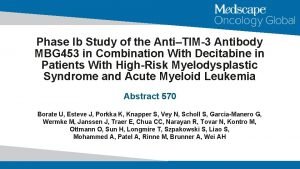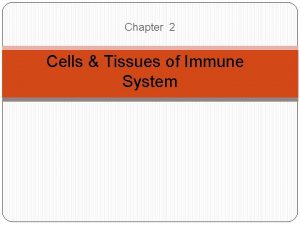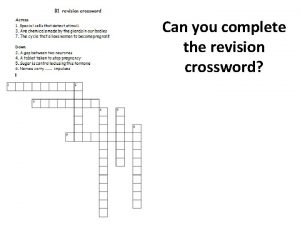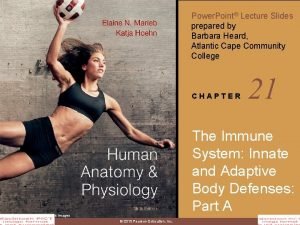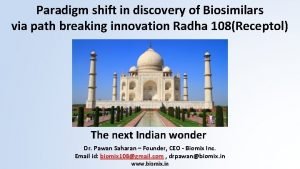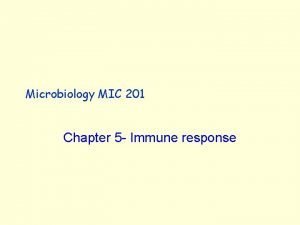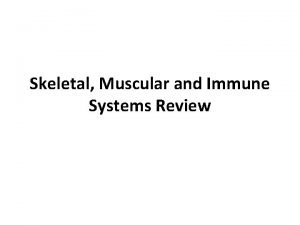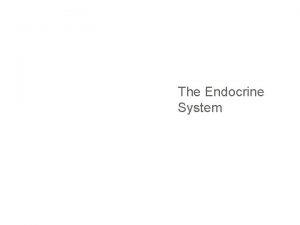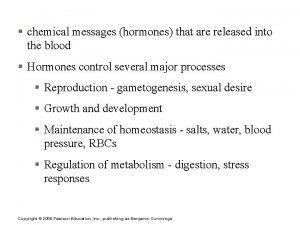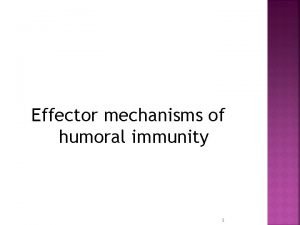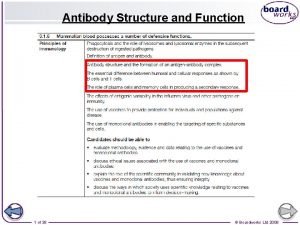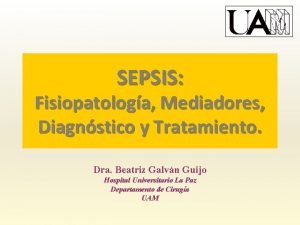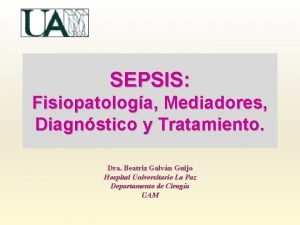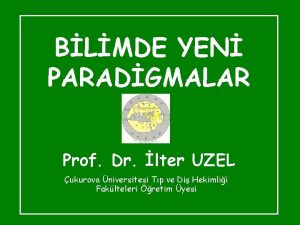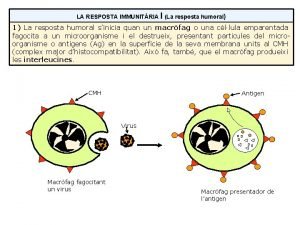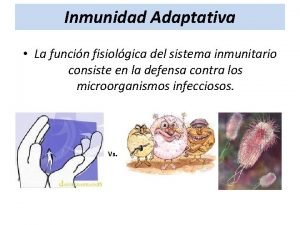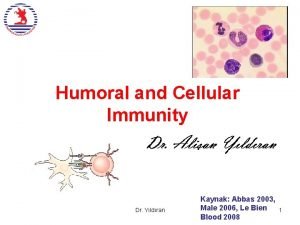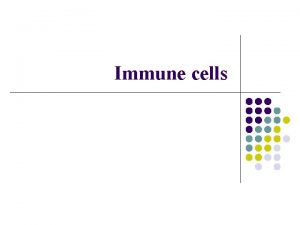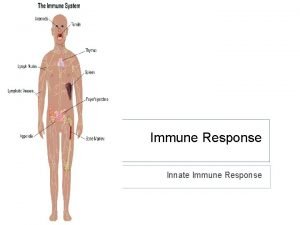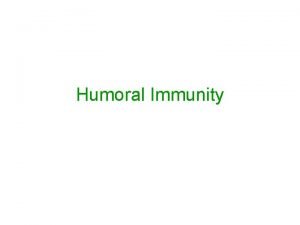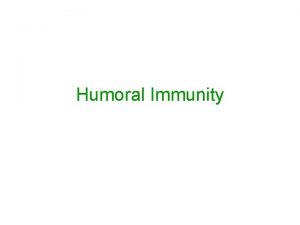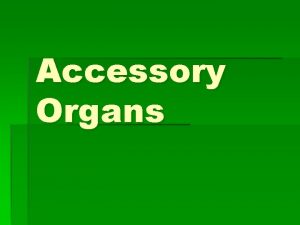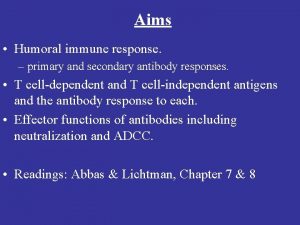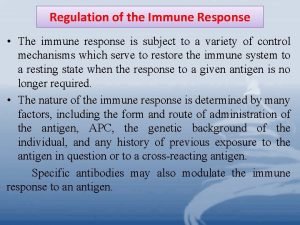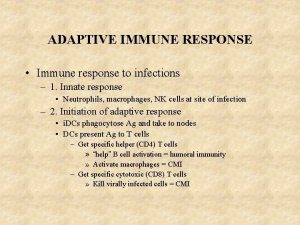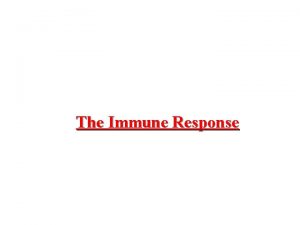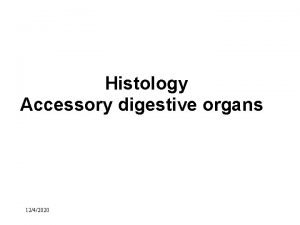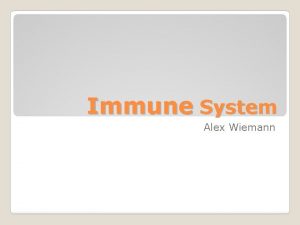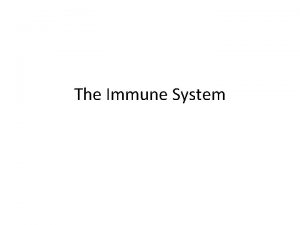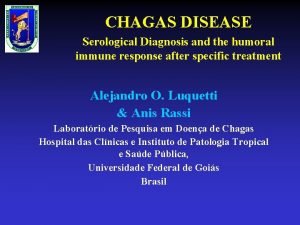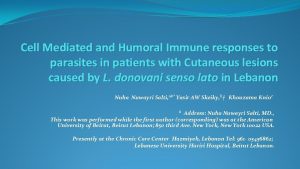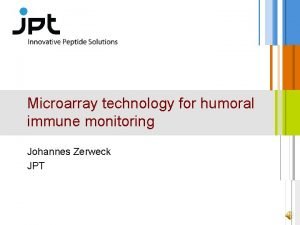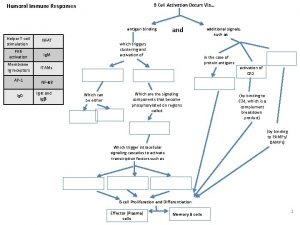Topics Humoral Immune Response Part II Accessory cells

























- Slides: 25

Topics • Humoral Immune Response Part II – Accessory cells – Fc Receptors – Opsonization and killing mechanisms of phagocytes – NK, mast, eosynophils • Immune regulation – Idiotypic network 5/22/2021 MICR 415 / 515 / 682 1

Distribution of Igs –Ig. G, Ig. M: Plasma –Ig. G, Ig. A (monomeric): Extracellular fluid –Ig. G Fetus – Ig. A (dimeric): Secretions, cross epithelia –Ig. E Mast cells beneath epithelia 5/22/2021 MICR 415 / 515 / 682 2

5/22/2021 MICR 415 / 515 / 682 3

5/22/2021 MICR 415 / 515 / 682 4

5/22/2021 MICR 415 / 515 / 682 5

Toxin neutralization Passive immunization: Transfer of Ab Dimeric toxin –Receptor binding –Active toxin 5/22/2021 MICR 415 / 515 / 682 6

Viral neutralization 5/22/2021 MICR 415 / 515 / 682 7

Neutralization of bacterial adhesion to host cells –Adhesins 5/22/2021 MICR 415 / 515 / 682 8

Complement fixation 5/22/2021 MICR 415 / 515 / 682 9

Immune Complex removal 5/22/2021 MICR 415 / 515 / 682 10

Accessory cells • Removal of pathogens after neutralization • Destruction of pathogens that can not be neutralized • Phagocytic cells – Macrophages, neutrophils • NK, eosinophils, basophils, mast cells – Secrete stored mediators 5/22/2021 MICR 415 / 515 / 682 11

Fc receptors • Bind the Fc portion of immunoglobulins • Signaling receptors – molecular complexes • chain transduce the signal • Crosslinking is necessary for effector function activation • Chain provides specificity – Different cells express different Fc receptors – Different Fc receptors bind to different isotypes – Then isotype produced determines cells that will be activated 5/22/2021 MICR 415 / 515 / 682 12

FC receptors bind to FC portion of Ab 5/22/2021 MICR 415 / 515 / 682 13

Other Fc-Accessory cell function • Same receptor can stimulate different functions in different cells – Fc RII-B • Negative regulation of B cells • Activation of macrophages, mast cells and neutrophils by immune complexes • Langerhans cells (Skin) – ingestion of Ag-Ab complexes, ingestion of pathogens – Ag presentation • Follicular Dendritic Cells – Immobilization of antigens – maturation of humoral respose 5/22/2021 MICR 415 / 515 / 682 14

Fc-Ab aggregation • Fc receptors in phagocytes bind mainly Ig. G. • Distinguish between free Ab and Ab bound to pathogen due to the aggregation or multimerization of Ab. • > avidity • Identification of the pathogen coated by Ab. 5/22/2021 MICR 415 / 515 / 682 15

• FC receptors enable accesory cells to detect pathogens through bound Ab molecules • Accesory cells lack intrinsic specificity • Ab + Fc receptors give specificity 5/22/2021 MICR 415 / 515 / 682 16

Opsonization • Many bacteria are recognized directly by phagocytes, they are non-pathogenic • Polysaccharides prevent direct recognition • Opsonization allows engulfment of these bacteria • Polysaccharides are T independent antigens EARLY RESPONSE • Ig. M is produced leading to Complement activation • Opsonization with Complement leads to phagocytosis via binding to complement receptors present in phagocytes. 5/22/2021 MICR 415 / 515 / 682 17

Facilitate engulfment 5/22/2021 MICR 415 / 515 / 682 18

Response to larger pathogens – Parasitic worms – Ab coat surface of parasite – Phagocyte attaches through Fc receptor – Lysosomes fuse with plasma membrane, releasing lysosome content into the – Ig. E extracellular space. – Eosinophils – Expression of Fc only after – Damage to the parasite activation and recruitment to an inflammatory site 5/22/2021 MICR 415 / 515 / 682 19

NK cells • Virally infected cells express viral proteins in their surface • Ab bind to viral antigens • Fc in NK cells binds to Ig. G 1 and Ig. G 3 • NK cells: – Large, intracellular granules, no specific receptors, cytotoxic • Antibody dependent cell mediated cytotoxicity (ADCC) 5/22/2021 MICR 415 / 515 / 682 • Mechanism similar to T cells 20

Mast cells –Large –Contain granules with chemical mediators (histamine) –Beneath epithelial and submucosal surfaces –Fc binds to free Ig. E and Ig. G –Ig. E + Fc bind with high affinity –Activated by cross-linking of Ig. E –Release granules immediately –Synthesize Prostaglandins, Leukotrienes, TNF- (local inflammation) 5/22/2021 MICR 415 / 515 / 682 21

Ig. E mediated response: mast cells, basophils, eosynophils • Histamine: – Increases blood flow to the area – Increases vascular permeability and fluid accumulation – Inflammation – Facilitates influx of Ab and Cells, recruitment of specific and non-specific elements of immune response – Increases lymph flow from site to lymph nodes – Causes muscular contraction, expulsion of pathogens 5/22/2021 MICR 415 / 515 / 682 22

• Phagocytic cells Macrophages Neutrophils 5/22/2021 MICR 415 / 515 / 682 23

Granulocytes –Eosinophils –Basophils –mast cells • Secrete stored mediators 5/22/2021 MICR 415 / 515 / 682 24

• Secrete stored mediators • ADCC 5/22/2021 MICR 415 / 515 / 682 25
 Primary immune response and secondary immune response
Primary immune response and secondary immune response Immune system def
Immune system def Tim-3
Tim-3 Immune effector cells
Immune effector cells Active artificial immunity
Active artificial immunity 1st 2nd and 3rd line of defense immune system
1st 2nd and 3rd line of defense immune system Third line of defense immune system
Third line of defense immune system Primary immune response
Primary immune response Unsaturated alcohol crossword clue
Unsaturated alcohol crossword clue Primary and secondary immune response
Primary and secondary immune response Cellular immune response
Cellular immune response Cellular immune response
Cellular immune response Muscle type
Muscle type Figure of endocrine system
Figure of endocrine system Humoral stimulus
Humoral stimulus Effector mechanism of humoral immunity
Effector mechanism of humoral immunity Pearson
Pearson The difference between humoral and cell mediated immunity
The difference between humoral and cell mediated immunity Respuesta inmunitaria celular y humoral
Respuesta inmunitaria celular y humoral Actihol
Actihol Receptores celulares
Receptores celulares Humoral patoloji paradigması
Humoral patoloji paradigması Limfoblast
Limfoblast Antigenos virales
Antigenos virales Humoral immunity
Humoral immunity Paranasal sinus at birth
Paranasal sinus at birth


